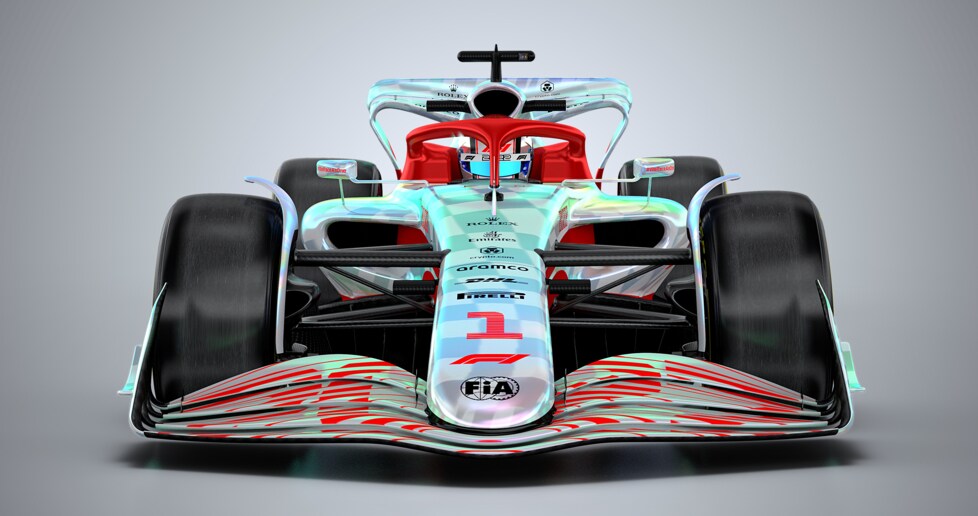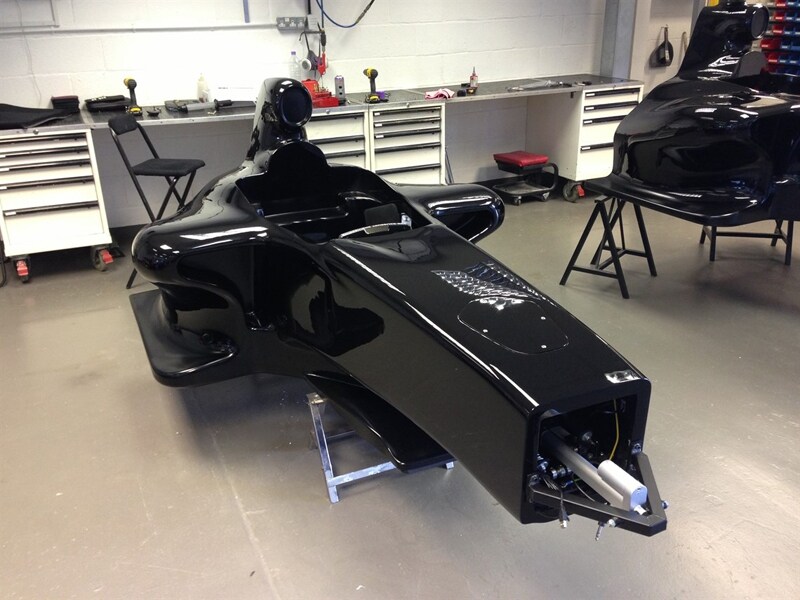How Is A Formula 1 Car Made?

- Critical attention is required every step of the making process
- Workers wear special coveralls and shoes during production
- The chassis goes through several tests before it is fitted in F1 cars
The Formula 1 team engineers use Finite Element, CAD, and Stress Analysis software to analyze, design, and refine the chassis and the overall car mechanisms. The leading proponents of the chassis are the fuel tanks, roll structures, ballasts, and survivors.

Photo Credit: www.formula1.com
The five-axis milling machine cuts out the solid epoxy chassis. The milling machine gathers and reads the data from the CAD files to replicate and deliver the contours and dimensions specified in the patterns. If there are any defects found in the patterns of the files, then the chassis will be reproduced as it is a critical part, and the patterns need to be made perfectly and defect-free.

Photo Credit: www.formula1.com
Inside the Production:
Engineers use epoxy instead of metals to reduce thermal expansion when the moulds are subjected to extremely high temperatures during the curing process. Production ensues in the cleanroom, which is sealed by double-door airlocks. The environment has to be tightly controlled, and the workers wear shoes and specially designed coveralls at all times.
Carbon fibre is used to construct the moulds, and the process has several stages. Vacuum treatments, layering, and thermal curing are a few processes that the moulds undergo. Upper and lower moulds are bonded together, and these two are used in halves. Extreme caution is taken in the production process not to damage any of these parts.

Photo Credit: www.formula1.com
Carbon Fiber is the Way to Go:
The chassis is made from carbon fibre, and several other fibre types are used. The orientation of the plies is critical as they are to be aligned in specific directions to accommodate the requirements. The orientation and the number of plies used vary from location to location in and around the chassis. Additional plies are needed for high-stress areas, such as the suspension mounting points and the engine, to give you some perspective.
Workers use reference manuals containing visual descriptions of how the plies should be applied to ensure the correct critical positioning of the plies. Once the ply gets layered, an inspecting officer checks the manual and gives his approval before moving on to the next ply. Once the plies are laid out in the correct position in the mould, the entire stack is put in a vacuum bag, which is further placed in an autoclave. The bag then vacuums down so that the plies get squeezed together.
Resin & the Final Process
The plies contain resin, and the high temperatures in the autoclave cause it to flow throughout the fabric evenly. The two halves of the chassis are taken out of their moulds and are then glued together to form a single solid shell. The bulkheads get glued to the shell to provide mountings for the suspension rockers at the front and the seatback of the driver. The final trimming and machining process occurs, and special attention is required at every step of the way.

Photo Credit: lifebeyondsportmedia.com
After the chassis is made, it must go through several crash tests conducted by the FIA before a designated official. Once the official approves the chassis, the car is permitted to run on the track.
Trending News
 1 min readTriumph Tracker 400 Unveiled in UK
1 min readTriumph Tracker 400 Unveiled in UK
Latest News
 Carandbike Team | Dec 17, 20252025 Ducati Panigale V2, Streetfighter V2 Recalled In The USThe recall states that two ABS fuses may have been inadvertently fitted in the wrong positions during wiring assembly and could increase the risk of a crash.1 min read
Carandbike Team | Dec 17, 20252025 Ducati Panigale V2, Streetfighter V2 Recalled In The USThe recall states that two ABS fuses may have been inadvertently fitted in the wrong positions during wiring assembly and could increase the risk of a crash.1 min read Jafar Rizvi | Dec 17, 2025Updated Bajaj Pulsar 220F Does Not Get Dual-Channel ABS; Company Issues ClarificationBajaj Auto has confirmed that the updated Pulsar 220F does not feature dual-channel ABS, contradicting earlier reports.1 min read
Jafar Rizvi | Dec 17, 2025Updated Bajaj Pulsar 220F Does Not Get Dual-Channel ABS; Company Issues ClarificationBajaj Auto has confirmed that the updated Pulsar 220F does not feature dual-channel ABS, contradicting earlier reports.1 min read Janak Sorap | Dec 16, 2025Triumph Tracker 400 Unveiled in UKBased on the Speed 400’s platform with the tune from the Thruxton 400.1 min read
Janak Sorap | Dec 16, 2025Triumph Tracker 400 Unveiled in UKBased on the Speed 400’s platform with the tune from the Thruxton 400.1 min read car&bike Team | Dec 16, 2025Kawasaki Versys-X 300 Offered With Rs 25,000 DiscountAfter the discount, the entry-level Kawasaki Adventurer tourer is priced at Rs 3.24 lakh (ex-showroom).3 mins read
car&bike Team | Dec 16, 2025Kawasaki Versys-X 300 Offered With Rs 25,000 DiscountAfter the discount, the entry-level Kawasaki Adventurer tourer is priced at Rs 3.24 lakh (ex-showroom).3 mins read car&bike Team | Dec 16, 20252026 MG Hector Prices, Variant-Wise Features ExplainedThe updated Hector is sold in 5 trim levels - Style, Select Pro, Smart Pro, Sharp Pro, Savvy Pro.2 mins read
car&bike Team | Dec 16, 20252026 MG Hector Prices, Variant-Wise Features ExplainedThe updated Hector is sold in 5 trim levels - Style, Select Pro, Smart Pro, Sharp Pro, Savvy Pro.2 mins read Janak Sorap | Dec 16, 2025Yamaha R3 and MT-03 Discontinued in India; Here’s WhyThe motorcycles had revied around a price revision of more than a lakh earlier this year, followed by additional discounts due to GST reform, and yet have failed to secure any momentum.1 min read
Janak Sorap | Dec 16, 2025Yamaha R3 and MT-03 Discontinued in India; Here’s WhyThe motorcycles had revied around a price revision of more than a lakh earlier this year, followed by additional discounts due to GST reform, and yet have failed to secure any momentum.1 min read
 Janak Sorap | Dec 11, 2025Harley-Davidson X440 T First Ride Review: Smarter and SharperHarley-Davidson has taken the X440 and given it a more focused and engaging twist. The result is the X440 T—essentially the same platform but updated in areas that give the motorcycle more appeal and riders more thrill.5 mins read
Janak Sorap | Dec 11, 2025Harley-Davidson X440 T First Ride Review: Smarter and SharperHarley-Davidson has taken the X440 and given it a more focused and engaging twist. The result is the X440 T—essentially the same platform but updated in areas that give the motorcycle more appeal and riders more thrill.5 mins read Shams Raza Naqvi | Dec 10, 20252025 Mini Cooper Convertible Review: More Colour On Indian RoadsThe updated Mini Cooper Convertible is set to be launched in the Indian market in the next few days. We drive it around Jaisalmer for a quick review.1 min read
Shams Raza Naqvi | Dec 10, 20252025 Mini Cooper Convertible Review: More Colour On Indian RoadsThe updated Mini Cooper Convertible is set to be launched in the Indian market in the next few days. We drive it around Jaisalmer for a quick review.1 min read Bilal Firfiray | Dec 8, 2025Tata Sierra Review: India’s New Favourite?Marking its return after a few decades, the reborn Sierra has made everyone sit up and take notice. But is it worth the hype?10 mins read
Bilal Firfiray | Dec 8, 2025Tata Sierra Review: India’s New Favourite?Marking its return after a few decades, the reborn Sierra has made everyone sit up and take notice. But is it worth the hype?10 mins read Girish Karkera | Dec 4, 20252026 Honda Prelude First Drive: Domesticated Civic Type RA sporty-looking coupe built to give customers a taste of performance but not at the expense of everyday practicality.5 mins read
Girish Karkera | Dec 4, 20252026 Honda Prelude First Drive: Domesticated Civic Type RA sporty-looking coupe built to give customers a taste of performance but not at the expense of everyday practicality.5 mins read Seshan Vijayraghvan | Nov 29, 2025Mahindra XEV 9S First Drive Review: Big Electric SUV, Bigger ExpectationsThe XEV 9S lands at a time when the EV crowd is growing fast. It’s a big, born-electric, three-row SUV that starts under 20 lakh. It sits close to the XUV700 in size, but the brief is very different. Here’s what it’s like on the road.11 mins read
Seshan Vijayraghvan | Nov 29, 2025Mahindra XEV 9S First Drive Review: Big Electric SUV, Bigger ExpectationsThe XEV 9S lands at a time when the EV crowd is growing fast. It’s a big, born-electric, three-row SUV that starts under 20 lakh. It sits close to the XUV700 in size, but the brief is very different. Here’s what it’s like on the road.11 mins read
































































































































